In the Omuro area of Kyoto, known as home to Ninna-ji Temple, there is a 1930's suburban estate with exemplary architectural and landscape features that are well maintained with their original appearance. The name of this estate registered as a National Tangible Cultural Property is Kyutei Omuro, meaning "the Former Omuro Estate." The estate is mainly rented out as a venue, with the entire garden and buildings together, for various occasions including location shooting, banquets and seminars. Special admission days and the Bishu Rakutei beer garden days have also been hosted, enchanting many visitors with the intangible qualities it holds as a place beyond its architectural marvel. Behind it all, are the people who took action to protect and pass on this heritage to future generations with solid determination. In other words, as Ms. Yamamoto, the director of Kyutei Omuro, said, "It is the people that make a cultural property attractive." This article is based on an interview with Ms. Yamamoto on how people can enhance the value that a cultural heritage site holds.
Beginning heritage management honoring the president’s late father, and the many challenges that followed
"The president's father bought this place because he was very fond of it. We who inherited it wanted to come together to protect this place because we felt that there was a special reason why he left this estate to us. We were inspired by such motivations, and now, it has been five years since we began managing it as Kyutei Omuro. During those years, we have not only been hit by the global pandemic of the Novel Coronavirus, but also the challenges of various legal and technical obstacles concerning the maintenance and management of a registered cultural property."
Apparently, the estate is located in a non-commercial district that is reserved for residential use by city planning regulations and building codes. This forced them to meet numerous requirements to achieve permission to run a business here.
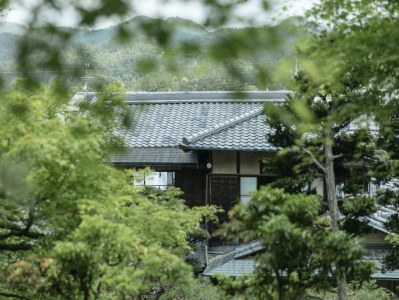
"We were required to secure the building's safety and to hold public hearings to gain the understanding of local residents to operate a business here. Securing the building's safety meant we had to start with a full survey of the property. This included settling the legal property boundaries. We also lifted every single tatami mat to inspect the structure below. Then, we had some repair work done on part of the ceiling. It added up to cost a fortune, and since the subsidies we were expecting to receive were reduced because of the pandemic, our company had to bear almost all of the cost and even needed to get a loan to do so. Also, we held public hearings sincerely hoping to answer any concerns held by local residents, but it didn't all go smoothly, and there were some difficult times."
"I think everyone involved in protecting and managing a cultural property like this must be experiencing so many challenges. We also went through days of questioning, asking ourselves if this is really worth doing as the company's project."
Inevitably, conserving and utilizing cultural properties like an architectural heritage and its gardens cost much money. Thus, looking at it from a business-management point of view becomes a prerequisite. Many businesses likely struggle to make conservation and utilization compatible with each other. How a Cultural Property can exist in a way that facilitates both is a question that needs to be answered.
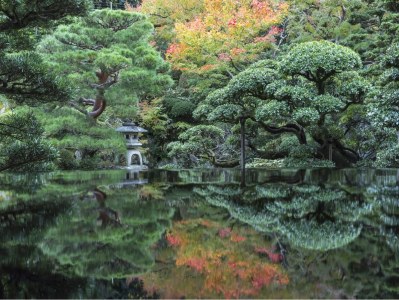
It’s the people that give life to a cultural heritage
"When we have a special admission day, we make a point of hiring a guide even if it costs a lot. It's something we cannot compromise. We especially ask the guides to not only explain the history and origin of this place but also to tell the story about how we, Yamasan Seizaisho Co., Ltd. * which is a company of fewer than ten persons, are trying so hard to keep it the way it is. We may sound haughty to make such a request, but we have actually asked guides who only talk about the building and its history to change their commentaries. I think it's important that the owners of cultural properties show how devoted they are to protecting the heritage."
* The current owner is the second daughter of the former president and founder of Yamasan Seizaisho Co., Ltd. The management is currently run by Evans Co., Ltd.
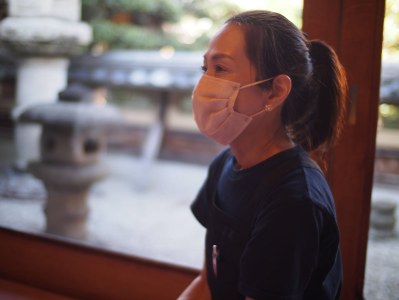
Ms. Yamamoto says she went to see many other places registered as cultural properties and noticed that the visitors seemed to stay no more than five minutes at places where the people who take care of it were not present or not enthusiastic. On the contrary, visitors to Kyutei Omuro tend to take their time and stay for quite a while, sometimes even a whole day! "There's plenty of attractive architecture here in Kyoto, so it's the people working here that make a difference." Ms. Yamamoto feels that "it is when the visitor can sense the enthusiasm of people here directed towards upkeeping this place that truly impresses them."
"The reception desk is staffed with our company's own employees, and we greet the visitors with a 'Hello.' I often hear visitors saying that it's their first time hearing "Hello," on entering a registered cultural property site. Some even said that exchanging greetings in itself was a pleasing experience."
"Just the fact that the president is here, and visitors can hear about the times when she used to live here as a child, playing with her father, entertains them. I know it's not that we are doing anything special, but I think that the visitors can feel that we are here wishing to talk with them in a non-superficial, relaxed way, just hoping to hear that they 'had a good time' here."
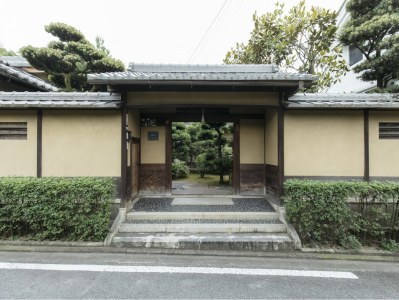
There are always individuals behind a cultural heritage, and those people can revitalize its good qualities. Ms. Yamamoto said visitors willingly listen to stories, about who is taking care of the place or with what wishes they are doing so, when they feel the enthusiasm of the person who is telling them.
"Some guests visit here again and again, saying they have come to see us. Our goal is to make this heritage a place that people keep wanting to come back to."
If you show your commitment and passion for protecting a heritage, then visitors may be drawn towards that enthusiasm and wish to come again. The way mutual respect is fostered between the tourist and business operator might be exactly what Code of Conduct for Sustainable Tourism in Kyoto is promoting as one of the ideals.
Business operation on the grounds of good relationships with the community
"We always tell ourselves that we should never cause any problems for our neighbors. For example, our manager sweeps not only in front of our building but all the way to the nearest train station. We also clean where our neighborhood's trash is collected. We believe this facility's operation is possible only if we maintain a good relationship with our community. Also, we make sure to greet everyone at every year's end as well as before and after we have public openings."
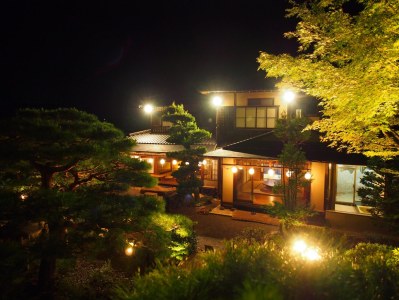
Running a business in a residential area requires consideration of issues such as the voices of the visitors talking or the sound of music when special events are hosted. Communicating sincerely and thoroughly has increased the number of people who express support for their management. Ultimately, this might be the result of championing harmony with the local communities.
Also, Ms. Yamamoto said she always receives people, whether they are coming from outside the community or not, with equal sincerity.
"We always take time to share any concerns or opinions we receive from our guests with all our employees and carefully consider them together before we respond. Sometimes it may be a one-way opinion from a guest, but even then, we make sure we are all on the same page so we have a consistent perspective on how we think and feel as a team, thus allowing us to communicate well with our guests. By doing so, similar customer complaints will not be repeated."
Keeping the same stance towards guests, whomever they may be
Until the COVID pandemic, Kyoto was receiving a great number of travelers from overseas, but there were few who visited Kyutei Omuro, which had just recently opened to the public then. Although problems occurring upon receiving international guests in some places and seasons were heard, they say it's their policy to be consistent in their attitude towards the guests, whoever they are or wherever they come from.
"I think some people have the impression that foreign visitors have bad manners, but there are Japanese people who behave badly, too. In fact, foreign guests are more willing to simply accept it when we do make requests. Furthermore, it is simply uncomfortable to have strangers walking around the neighborhood from our neighbors' point of view, regardless of nationality. But, of course, our guests do not deserve to be blamed for coming here. I think it is our responsibility to cope with such concerns since we are the ones who have opened this facility to the public. We always try to find a better way for both sides to communicate positively, for example, by saying, "We'd appreciate it if you could ~," instead of simply saying, "Don't do ~!"
Ms. Yamamoto seemed to inform us how interacting with sincerity, regardless of whether the person comes from inside or outside of the community, might be a key to managing businesses successfully.
Thinking creatively to add new charms to Kyoto
"Before the pandemic, when many inbound visitors came to Japan, some Japanese tourists said that 'Kyoto has become a town of foreigners.' Still, as long as Kyoto continues to have the charm of its people, I don't think domestic tourists will abandon Kyoto. We are a small and little known company, but because of that, I think we can be creative in how we do things. In other words, I think we must be the ones to be bold enough to take action and add new pages to Kyoto's wonders."
During the special admission days, Kyutei Omuro tries to keep the restrictions at a minimum in the hope that the visitors can enjoy every detail of the place and take photos. The beer garden event called Bishu Rakutei was born from the inspiration that "it might be fun to enjoy the garden with some drinks" (which is also what the name Bishu Rakutei means in kanji characters). Also, during Bishu Rakutei, carefully prepared dishes with a touch of homemade style food are served, giving it a different flavor from other beer gardens and making the experience unique.
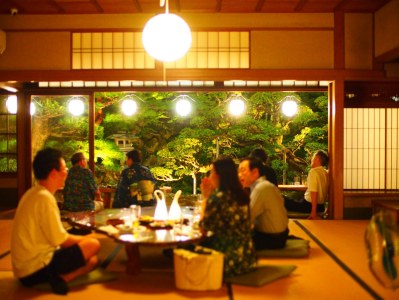
Also, the other day, Kyutei Omuro was used as the venue for a Kyoto study tour by students of the University of Tokyo's Graduate School of Public Policies. The quality time they spent in this exceptional setting, studying about community planning and regional economy, may have helped in stimulating creative ideas among the students, who had been taking classes online since the beginning of the pandemic.
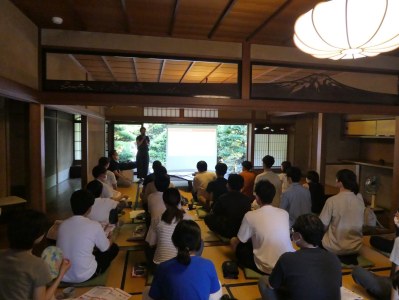
"By having a direct and personal experience in a cultural heritage site's buildings and gardens, I think the visitors can enjoy it more. That's why we, the employees including myself, go out of our way to join in and share time with our guests. I think that our presence makes this place more interesting because we are not just an anonymous person behind the reception desk."
The way new intangible values are added to the priceless architecture and garden of Kyutei Omuro by the involvement of the people who care for it seems to perfectly match the ideals that Code of Conduct for Sustainable Tourism in Kyoto uphold. Through this, we also noticed how difficult it is to put those ideals into practice. The examples that Ms. Yamamoto and her employees have shown may be inspiring to all those who wish to cultivate and polish the "treasures" they have inherited from past generations.
【Code of Conduct for Sustainable Tourism in Kyoto】
Kyoto City and Kyoto City Tourism Association have laid down the Code of Conduct for Sustainable Tourism in Kyoto to be cherished and implemented by all people involved in tourism in Kyoto. Together with the tourism industry and its workers, and the residents, let us realize sustainable tourism in this city.






